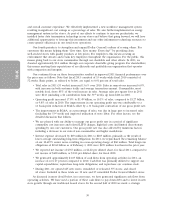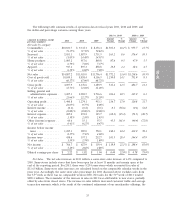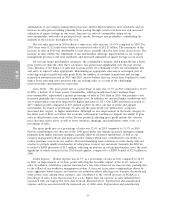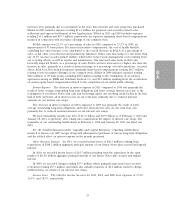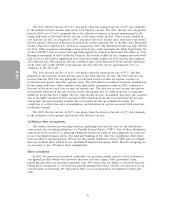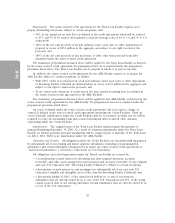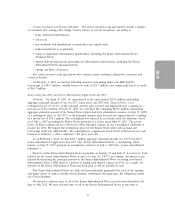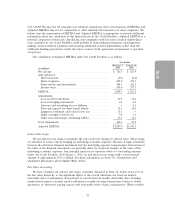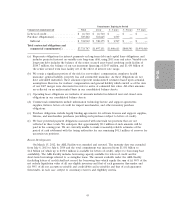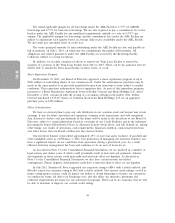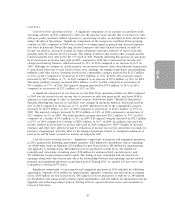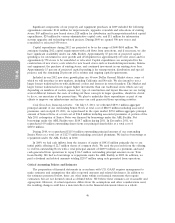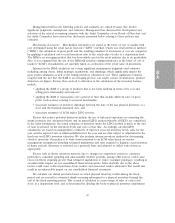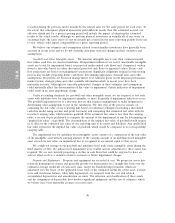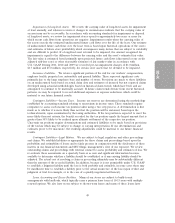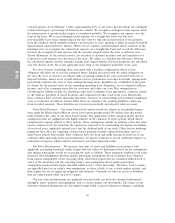Dollar General 2011 Annual Report Download - page 140
Download and view the complete annual report
Please find page 140 of the 2011 Dollar General annual report below. You can navigate through the pages in the report by either clicking on the pages listed below, or by using the keyword search tool below to find specific information within the annual report.
10-K
redemption prices described or set forth in the senior subordinated indenture. We also may seek, from
time to time, to retire some or all of the Senior Subordinated Notes through cash purchases on the
open market, in privately negotiated transactions or otherwise. Such repurchases, if any, will depend on
prevailing market conditions, our liquidity requirements, contractual restrictions and other factors. The
amounts involved may be material.
Change of Control. Upon the occurrence of a change of control, which is defined in the senior
subordinated indenture, each holder of the Senior Subordinated Notes has the right to require us to
repurchase some or all of such holder’s Senior Subordinated Notes at a purchase price in cash equal to
101% of the principal amount thereof, plus accrued and unpaid interest, if any, to the repurchase date.
Covenants. The senior subordinated indenture contains covenants limiting, among other things,
our ability and the ability of our restricted subsidiaries to (subject to certain exceptions):
• incur additional debt, issue disqualified stock or issue certain preferred stock;
• pay dividends and or make certain distributions, investments and other restricted payments;
• create certain liens or encumbrances;
• sell assets;
• enter into transactions with our affiliates;
• allow payments to us by our restricted subsidiaries;
• consolidate, merge, sell or otherwise dispose of all or substantially all of our assets; and
• designate our subsidiaries as unrestricted subsidiaries.
Events of Default. The senior subordinated indenture also provides for events of default which, if
any of them occurs, would permit or require the principal of and accrued interest on the Senior
Subordinated Notes to become or to be declared due and payable.
Adjusted EBITDA
Under the agreements governing the Credit Facilities and the senior subordinated indenture,
certain limitations and restrictions could arise if we are not able to satisfy and remain in compliance
with specified financial ratios. Management believes the most significant of such ratios is the senior
secured incurrence test under the Credit Facilities. This test measures the ratio of the senior secured
debt to Adjusted EBITDA. This ratio would need to be no greater than 4.25 to 1 to avoid such
limitations and restrictions. As of February 3, 2012, this ratio was 1.1 to 1. Senior secured debt is
defined as our total debt secured by liens or similar encumbrances less cash and cash equivalents.
EBITDA is defined as income (loss) from continuing operations before cumulative effect of change in
accounting principles plus interest and other financing costs, net, provision for income taxes, and
depreciation and amortization. Adjusted EBITDA is defined as EBITDA, further adjusted to give
effect to adjustments required in calculating this covenant ratio under our Credit Facilities. EBITDA
and Adjusted EBITDA are not presentations made in accordance with U.S. GAAP, are not measures of
financial performance or condition, liquidity or profitability, and should not be considered as an
alternative to (1) net income, operating income or any other performance measures determined in
accordance with U.S. GAAP or (2) operating cash flows determined in accordance with U.S. GAAP.
Additionally, EBITDA and Adjusted EBITDA are not intended to be measures of free cash flow for
management’s discretionary use, as they do not consider certain cash requirements such as interest
payments, tax payments and debt service requirements and replacements of fixed assets.
Our presentation of EBITDA and Adjusted EBITDA has limitations as an analytical tool, and
should not be considered in isolation or as a substitute for analysis of our results as reported under
40


